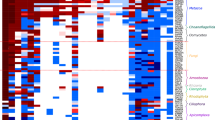Abstract
Purpose and Methods: We performed multiple comparisons between available amino acid (aa) sequences of homeodomain(HOM)-containing proteins from a wide spectrum of animals to create an evolutionary classification of the proteins.
Results: Based on results of statistical and special computational analyses of over 500 homeodomain aa sequences (HOMs) a novel system of concepts describing complex structural correlations between homologous proteins is proposed. This system includes such notions as differentiated isofunctionality of aa, chemotype, stereotype, local functional motifs, gradual conservativeness of aa positions, and group-specific domain patterns, as well as major categories of the evolutionary classification of HOMs (Division, Type, Branch, Class, Family, Series, Variety, Sort). Using this approach, a complete structural systematics of HOMs belonging to proteomes of eukaryotic animals is proposed.
Conclusions: The proposed structural classification of HOMs is in full agreement with the bulk of experimental data revealing complex functional similarities and differences among HOMs in terms of their expression patterns in developing embryos. It turn, this classification can provide answers regarding homology among homeodomains when experimental data are conflicting.
Similar content being viewed by others
REFERENCES
Gindilis VM, Ageev SV: HuNeG project: The progress report of 1993–94 on the Scottish Rite SRP Huneg grant award, Oct 1994, pp 1-31. (Office of the SRP, P.O. Box 519, 33 Marret Road, Lexington, MA 02173)
Scott MP, Tamkun JW, Hartzell GW: The structure and function of the homeodomain. Biochim Biophys Acta 1989;989:25-48
Burglin TR: A comprehensive classification of homeobox genes: In Guidebook to the Homeobox Genes, D Duboule (ed). New York, Oxford University Press, 1994, pp 25-71
Stein S, Fritsch R, Lemaire L, Kessel M: Checklist: Vertebrate homebox genes. Mech Dev 1996;55:91-108
Abouhief E, Akam M, Dickinson WJ, Holland PWH, Meyer A, Patel NH, Raff RA, Roth Wray GA: Homology and developmental gene. Trends Genet 1997;13:432-433
Gindilis V, Banikazemi M, Vyasankin A, Verlinsky O, Matveyev I, Verlinsky Y: Borders, patterns, and distinctive families of homeodomains. J Assist Reprod Genet 1994;11:244-269
Gindilis VM, Verlinsky Y: Reconstruction of mutational history in the evolution of the caudal-like homeodomain family. J Mol Evol (in press)
Islam SA, Luo J, Sternberg MJE: Identification and analysis of domains in proteins. Prot Eng 1995;8:513-525
Schmidt W: Phylogeny reconstruction for protein sequences based on amino acid properties. J Mol Evol 1995;41:522-530
Jiwani NG, Liebman MN: Structure-function analysis of amino acid substitutions in proteins: In Molecular Modeling, TF Kumosinski, MN Liebman (eds). Washington, DC, Am Chem Soc, 1994, pp 184-206
Bowie JU, Luthy R, Eisenberg D: A method to identify protein sequences that fold into a known three-dimensional structure. Science 1991;253:164-170
Taylor WR: The classification of amino acid conservation. J Theor Biol 1986;119:205-218
Kidera A, Konishi Y, Oka M, Ooi T, Scheraga HA: Statistical analysis of the physical properties of the 20 naturally occuring amino acids. J Prot Chem 1985;4:23-55
Ratner V, Jarkich A, Kolchanov N: In Problems of the Molecular Evolution Theory. Novosibirsk, Nauka, 1985, pp 63-74 (in Russian)
Swanson R: A unifying concept for the amino acid code. Bull Math Biol 1984;46:187-203
Burglin TR: Analysis of TALE superclass homeobox genes. Nucleic Acids Res 1997;25:4173-4180
Duprey P, Chowdhury K, Dressler GR, Balling R, Simon D, Guenet J-L, Gruss P: A mouse gene homologous to the Drosophila gene caudal is expressed in epithelial cells from the embryonic intestine. Genes Dev 1988;2:1647-1654
Hu Y, Kazenwadel J, James R: Isolation and characterization of the murine homeobox gene Cdx-1. J Biol Chem 1993; 268:27214-27225
Author information
Authors and Affiliations
Rights and permissions
About this article
Cite this article
Gindilis, V., Goltsman, E. & Verlinsky, Y. Evolutionary Classification of Homeodomains. J Assist Reprod Genet 15, 349–357 (1998). https://doi.org/10.1023/A:1022517232580
Issue Date:
DOI: https://doi.org/10.1023/A:1022517232580




